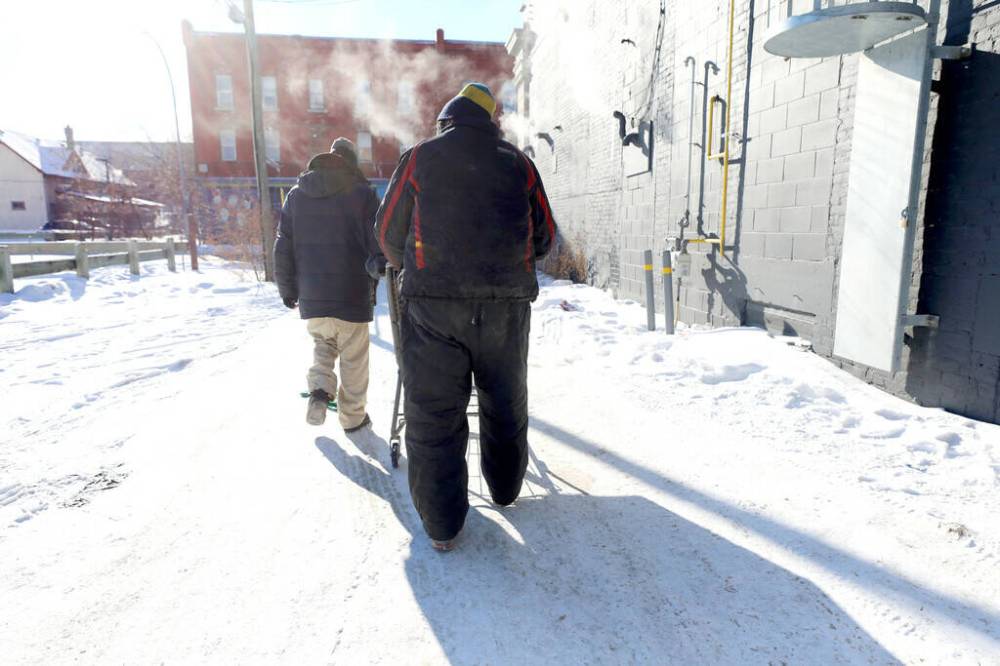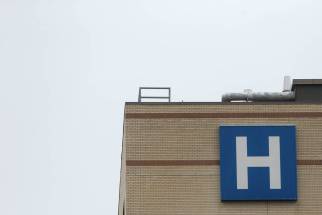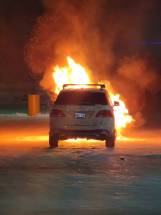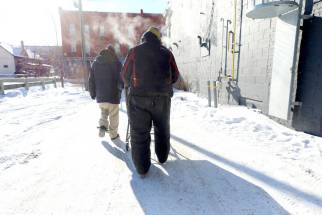Omicron, weather increase shelters’ burden
Read this article for free:
or
Already have an account? Log in here »
To continue reading, please subscribe:
Monthly Digital Subscription
$0 for the first 4 weeks*
- Enjoy unlimited reading on winnipegfreepress.com
- Read the E-Edition, our digital replica newspaper
- Access News Break, our award-winning app
- Play interactive puzzles
*No charge for 4 weeks then price increases to the regular rate of $19.00 plus GST every four weeks. Offer available to new and qualified returning subscribers only. Cancel any time.
Monthly Digital Subscription
$4.75/week*
- Enjoy unlimited reading on winnipegfreepress.com
- Read the E-Edition, our digital replica newspaper
- Access News Break, our award-winning app
- Play interactive puzzles
*Billed as $19 plus GST every four weeks. Cancel any time.
To continue reading, please subscribe:
Add Free Press access to your Brandon Sun subscription for only an additional
$1 for the first 4 weeks*
*Your next subscription payment will increase by $1.00 and you will be charged $16.99 plus GST for four weeks. After four weeks, your payment will increase to $23.99 plus GST every four weeks.
Read unlimited articles for free today:
or
Already have an account? Log in here »
Hey there, time traveller!
This article was published 13/01/2022 (1429 days ago), so information in it may no longer be current.
Living through a pandemic is difficult even under the best of circumstances — but for those who are navigating homelessness during a tsunami-sized pandemic wave in January, it’s crushing.
A recent bitter cold snap, coupled with the highly contagious Omicron variant, put an added strain on Winnipeg’s shelter network. Volunteer and staff shortages due to illness and isolation requirements are stretching services even thinner, and the pandemic is creating even more barriers for vulnerable people, especially those living with addictions.
People can’t warm up in places such as Tim Hortons if they don’t have a vaccination card, which is hard to obtain for those who don’t have a fixed address or a phone to flash a QR code. If relatively privileged people are struggling to obtain KN95 masks, for example, then certainly unhoused people are, too.
The contagious nature of Omicron makes sleeping in close quarters a riskier activity. For those who do get sick, public-health guidance is often geared toward people who have access to clean water and a place to isolate and rest. Even a mitigation tool as simple as handwashing becomes out of reach for those experiencing homelessness.

And so, some are choosing, instead, to find shelter in the city’s bus shelters because they worried about contracting the virus in a congregate setting, or are fearful of violence. The choices are grim, and they barely resemble choices at all: potentially catch COVID-19, or potentially freeze.
But while the pandemic has certainly created new challenges for Winnipeg’s most vulnerable population, it has also amplified existing ones.
Many missions do not allow clients to access their services if they are intoxicated, which has always been a significant barrier. The lack of community spaces to warm up on days when the mercury struggles to clear minus-20C is also a long-standing, pre-pandemic issue in this, a winter city. Every year, there are periods of extreme cold with risk of limb- and life-threatening wind chills, and every year the challenges are the same.
As the pandemic has laid plain, Winnipeg cannot rely on a patchwork of bus shelters, mall food courts and coffee shops to serve as de-facto warming shelters, nor can it be in a place of constantly reacting to crises instead of working to prevent them.
Our city’s organizations are doing what they can, but they, too, are forced into a mitigation holding pattern so long as the larger roots of the problem are never addressed.
COVID-19 has exposed the gaping holes in our so-called social safety net, but what it should also do is underline, boldface and circle the need for harm-reduction services.
COVID-19 has exposed the gaping holes in our so-called social safety net, but what it should also do is underline, boldface and circle the need for harm-reduction services such as supervised consumption sites, community warming spaces, low-barrier shelters and safe, accessible housing — as in, the things organizations that work with people living with addiction, mental illness or lack of housing (and sometimes all three) have been asking for, and that governments continue to study.
Otherwise, as sure as a windchill-warning-abetted cold snap in January, our most vulnerable citizens will continue to be left behind. There will be another winter, another public-health crisis, another summer of extreme heat.
If a pandemic doesn’t create a sense of urgency, it’s hard to imagine what will. Despite the myriad challenges COVID-19 — and, more particularly, the current crushing Omicron wave — has created for social-service providers, it remains the responsibility of our elected leaders to recognize and deal directly with the issues that endanger the most vulnerable among us.







